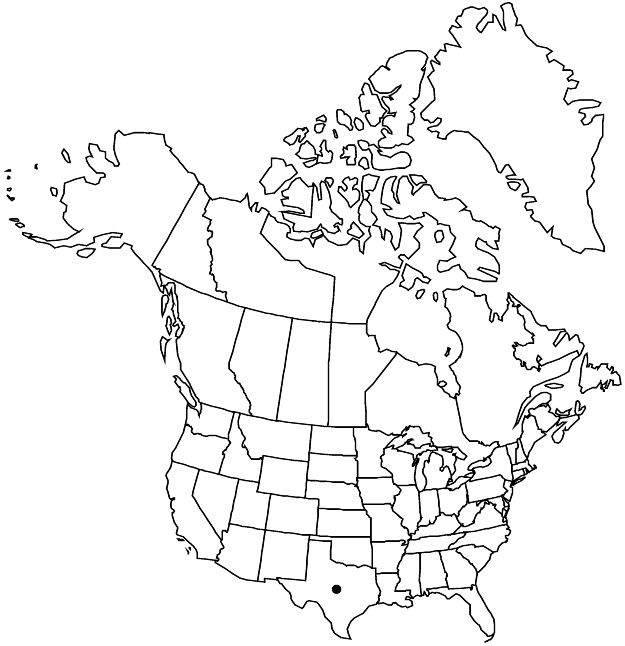Oxalis dichondrifolia
Smithsonian Contr. Knowl. 3(5): 27. 1852.
Herbs perennial, caulescent, caudex present, rhizomes and stolons absent, bulbs absent, taproot sometimes with tuberlike portions. Aerial stems mostly 1–3 from base, erect, 5–20 (–30) cm, becoming woody proximally, finely hirtellous-villous. Leaves cauline; stipules brownish, linear-setiform, margins without flanges, apical auricles absent; petiole (0.5–) 1–3 cm; leaflet 1, dull gray-green, suborbiculate to oblong-obovate or ovate, 5–37 mm, not lobed, apex concave or truncate to retuse and apiculate, surfaces strigose-hirsute, oxalate deposits absent. Inflorescences 1-flowered, axillary at distal nodes; peduncles 15–25 (–50) cm. Flowers heterostylous; sepal apices without tubercles; petals yellow to orange-yellow, 11–13 mm. Capsules broadly cylindric, 5–8 (–10) mm, densely pilose.
Phenology: Flowering Feb–Jun, sporadically year-round.
Habitat: Gravelly hills, clay dunes, limestone slopes, calcareous marl, sand, sandy loam, sandy silt, alluvial soils, brushlands, mesquite thickets, chaparral, roadsides, fields, ditch and river margins.
Elevation: 0–500 m.
Distribution

Tex., Mexico (Coahuila), Mexico (Nuevo León), Mexico (San Luis Potosí), Mexico (Tamaulipas), Mexico (Veracruz)
Discussion
Oxalis dichondrifolia is fairly widespread in southern Texas.
Selected References
None.
Lower Taxa
"alternating" is not a number.